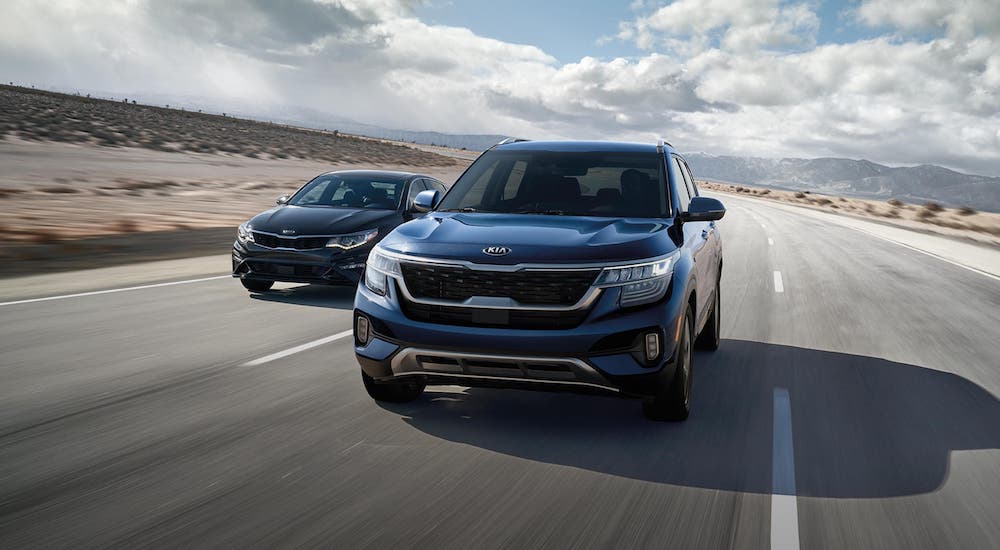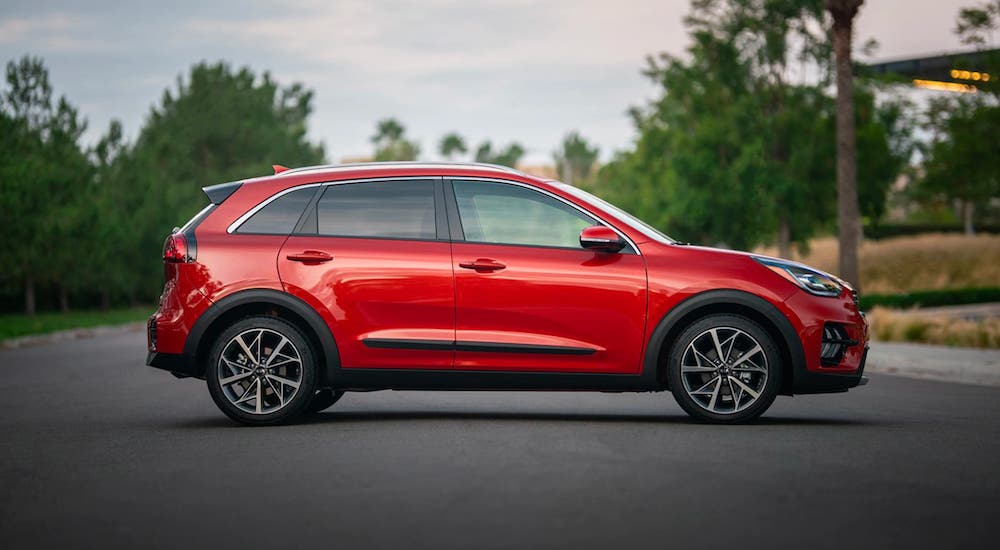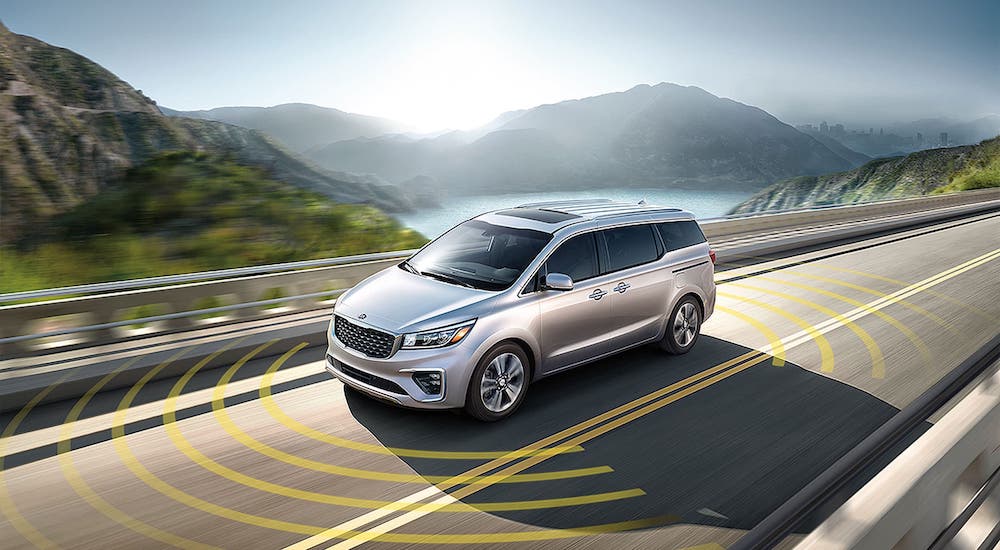
There was once a time, many years ago, when the only safety feature in automobiles were simple seatbelts that strapped across the lap of the driver and passengers. But as time went by, things started to change dramatically. The lap belt would eventually be replaced with the lap belt and shoulder strap, which provided to be a safer combination. Eventually, airbags were employed for safety purposes. As new technologies were discovered, vehicles would become safer. In the beginning, features like anti-lock brakes were becoming increasingly popular. Nowadays, many safety features, like antilock brakes and airbags, are included with all makes and models. The Kia models you shop for at your Houston Kia dealer offer several safety features; many are standard. Here is a breakdown of the safety features found in Kia models and why they are so important.
Airbags
Since 1998, airbags have been standard on all new cars, but many vehicles had them even before this time. Vehicles have crash sensors that are connected to an onboard computer, which detects when a collision occurs and deploys the bags. In a matter of just a few milliseconds, literally a blink of the eye, they inflate and immediately start to deflate.
The first airbags were fitted on the steering wheel or dash, but side airbags and airbags for rear-seat passengers are nearly universal. In 2003, adaptive airbags were developed and became standard in 2007. This type of airbags detect the presence, seat position, and weight and de-power or deactivate when appropriate to minimize injury if a driver or passenger is too close to the wheel or dash.
Airbags save thousands of lives every year.
Anti-Lock Brakes
Before vehicles offered anti-lock brakes, locking up the wheels when braking hard was quite common. Wheels that are locked up prevent the driver from steering, especially on slippery surfaces like in the rain or on ice.
Anti-lock braking systems use sensors at each of the wheels to prevent lock-ups; this allows the driver to remain in control while braking hard. However, many drivers get a little freaked out when the brakes begin to pulsate, but this is a sign that the system is doing its job. There is no need to pump the brakes with ABS; simply press down hard on the brakes when you need to stop, and the system will do what it is supposed to do.

Electronic Stability Control
It has been several years since Electronic Stability Control was first introduced. The system goes by many names depending on the manufacturer, but it all works pretty much the same way. The system works by helping drivers stay in control of the vehicle during extreme steering maneuvers by keeping the vehicle going in the driver’s intended direction.
For example, a driver might suddenly and forcefully turn the steering wheel in an attempt to avoid something that pops out onto the road. Electronic Stability Control uses automatic braking on all four wheels to prevent the vehicle from plowing out or spinning out, which maximizes an outcome in which the vehicle maintains control. It’s a complicated process, but basically, it uses the driver’s natural reaction of steering to keep the vehicle going in the intended direction.
ESC plays an important role in reducing the number of crashes as well as the severity of a collision. The Institute for Highway Safety estimates that the system prevents thousands of fatal accidents per year. It is these kinds of numbers that prompted the government to require ESC for all passenger vehicles by 2012.
Lane Departure Warning
A lane departure warning system alerts the driver when they drift out of their lane without using the turn signal. The system utilizes cameras that monitor lane markings, and they detect when the vehicle is drifting out of the lane. When the system detects an unintentional lane departure, a visual and/or audio alert will warn the driver.
Lane keep assist is another form of lane departure warning, and this helps keep the vehicle from drifting too far. When the vehicle drifts too far out of the lane, the system detects it and the vehicle then steers it back to the center of the lane.
Lane centering assist is the latest technology available for vehicles. This system is continually assisting the driver in keeping the vehicle centered in the current lane. The system senses when the driver has their hands on the wheel and basically helps in driving the vehicle. If the driver is inattentive even for just a few seconds, the system keeps the vehicle from drifting.
These systems are designed to help distracted drivers stay safe on the road. And the alerts will provide a reminder to use your turn signal when changing lanes. Still, it is best if you pay attention while driving and not rely on the system too much.
Forward Collision Warning
A forward-collision warning system utilizes audible and/or visual alerts to warn drivers of an impending collision with a vehicle or object in its path. The system uses cameras, lasers, or radar to scan the road in front of you while driving. An alert is issued when there is a danger of a collision. The system will warn you should you get too close to the vehicle in front of you; the alerts will cease once you have applied the brakes and maintain a safe distance.

High-Beam Assist
You have probably experienced the dazzling brightness that is caused when an oncoming driver has failed to turn off their high-beams. It is also very likely that you have forgotten to turn off the high-beams as another driver approached. At the very least, this type of situation is very annoying; at worst, it can cause an accident.
High-beam assist does exactly what you think it does; it automatically turns down the bright lights when a vehicle approaches from the other direction and turns them back on after the vehicle safely passes. It has a very quick response, which makes it just as good if not superior to manual control. Best of all, it never forgets to turn off the bright lights when a vehicle approaches.
Adaptive Cruise Control
Adaptive or smart cruise control is an intelligent form of cruise control that speeds up and slows down your vehicle automatically to help keep pace with the vehicle in front of you. The driver sets the cruise control at the maximum desired speed, and radar sensors keep track of the traffic in front of you, and the system instructs your vehicle to stay a safe distance from it.
Anybody who has traveled on the highway knows that traffic is never consistent. That is, traffic flow can swing from 60 mph to a complete standstill in a short period of time. And if you are engaged in cruise control, you are constantly hitting the brakes to stay with the flow of traffic. Adaptive cruise control eliminates the need to constantly press on the brakes and re-engage cruise control.
Your New Kia Is at Parkway Family Kia
Today’s Kia models are packed with safety features that help protect drivers and their passengers. When shopping for a new Kia at Parkway Family Kia, feel free to ask us about the safety features that are standard and optional. The staff at Parkway Family Kia are people just like you, we have families and people we care about, and safety behind the wheel is a concern for all of us. We are dedicated to ensuring the Kia you choose is reliable, dependable, and safe. Stop by Parkway Family Kia in Kingwood, TX, today and let your journey to a new Kia begin.





 Warranties include 10-year/100,000-mile powertrain and 5-year/60,000-mile basic. All warranties and roadside assistance are limited. See retailer for warranty details.
Warranties include 10-year/100,000-mile powertrain and 5-year/60,000-mile basic. All warranties and roadside assistance are limited. See retailer for warranty details.